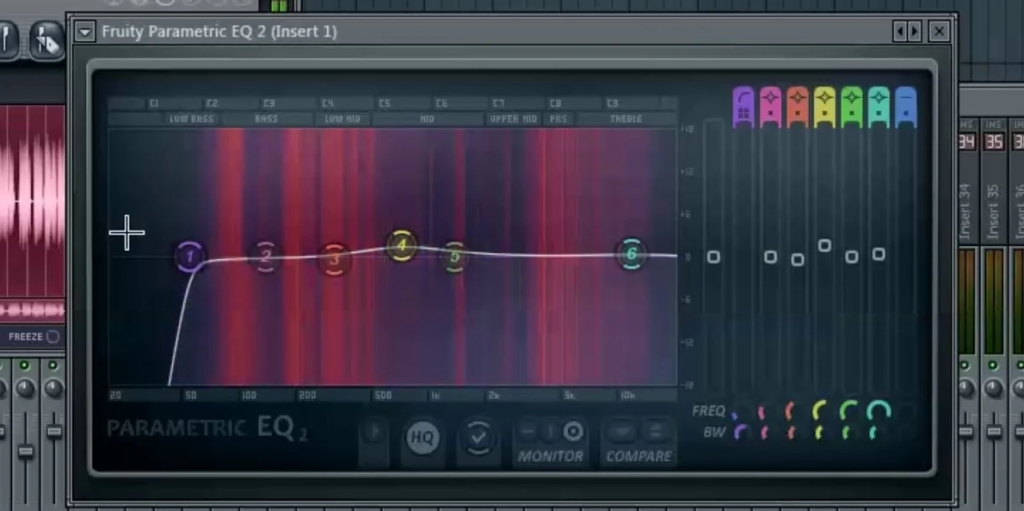Equalization (EQ) is one of the most powerful tools in music production. Understanding how frequencies interact and how to manipulate them correctly is key to achieving a balanced, professional mix. In this guide, I’ll break down EQ basics the way we approach them in our production process.
EQ (Equalization) is the process of adjusting the balance of different frequency components in an audio signal. It helps shape the tonal balance of a mix, making elements sit well together and enhancing clarity.
Understanding Frequency Ranges
Sub-Bass (20Hz – 60Hz)
- Deep, low-end rumble felt more than heard.
- Enhances power in kicks and bass lines but can cause muddiness if overused.
Bass (60Hz – 250Hz)
- Adds weight and warmth to a mix.
- Too much can make a mix boomy, too little can make it thin.
Low Mids (250Hz – 500Hz)
- Affects body and fullness of instruments.
- Overuse can result in a muddy mix.
Mids (500Hz – 2kHz)
- Defines the presence of vocals and instruments.
- Too much can make a mix sound honky or boxy.
High Mids (2kHz – 6kHz)
- Controls presence and clarity.
- Boosting adds brightness but excessive amounts can cause harshness.
Highs (6kHz – 20kHz)
- Affects airiness and sparkle.
- Overuse can make a mix sound too sharp or fatiguing.

Types of EQ and How They Work
- Parametric EQ: Offers precise control over multiple frequency bands.
- Graphic EQ: Uses fixed bands with sliders for adjustments.
- Shelving EQ: Adjusts all frequencies above or below a set point.
- Dynamic EQ: Reacts to the incoming signal, applying EQ adjustments dynamically.
Common EQ Techniques
- High-Pass Filtering: Removing unnecessary low frequencies to prevent muddiness.
- Low-Pass Filtering: Cutting excessive highs for a warmer sound.
- Notching: Removing unwanted resonances.
- Boosting & Cutting: Using subtle boosts and cuts to balance a mix.
EQ Mistakes to Avoid
- Overusing boosts instead of cutting problematic frequencies.
- Applying EQ without considering how it affects the entire mix.
- Ignoring phase issues caused by extreme EQ moves.
Pro Tips for Effective EQing
- Always EQ in context—soloing instruments can be misleading.
- Cut before boosting to avoid excessive processing.
- Use reference tracks to compare tonal balance.
- Experiment with dynamic EQ for controlled adjustments.
Frequently Asked Questions (FAQ)
How do I know which frequencies to adjust?
Use a frequency analyzer and trust your ears. Identify problem areas and make subtle changes.
Should I EQ before or after compression?
It depends on the sound you’re aiming for. EQ before compression controls tonal balance, while EQ after compression refines the final tone.
How much EQ is too much?
If your adjustments exceed ±6dB regularly, consider re-evaluating your source material or arrangement.
Conclusion
Mastering EQ is essential for achieving a professional mix. By understanding frequency ranges, choosing the right EQ type, and applying proper techniques, you can enhance clarity and balance in your productions. Keep experimenting and refining your EQ skills to develop a signature sound that stands out.